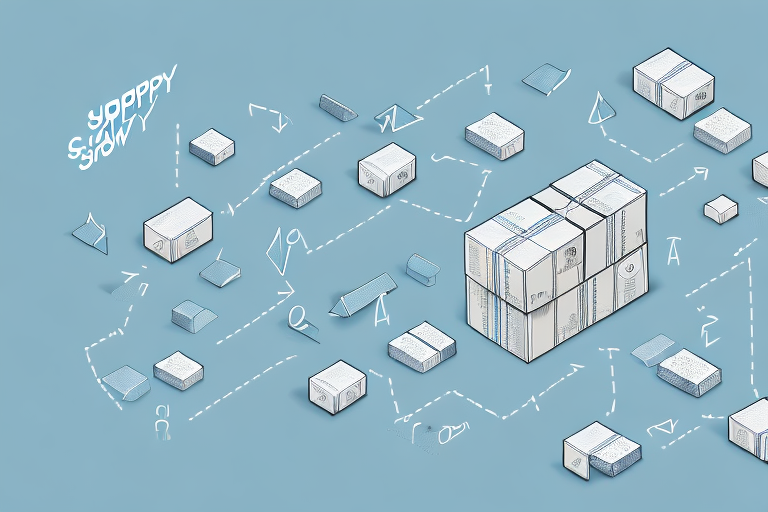Optimizing Your Supply Chain with FCA (Free Carrier)
In today's rapidly evolving business landscape, optimizing your supply chain is crucial for maintaining competitiveness and ensuring seamless delivery processes. One effective method to achieve this optimization is by utilizing Incoterms—internationally recognized commercial terms that standardize and simplify trade transactions. Among these, Free Carrier (FCA) stands out as a preferred choice for many businesses aiming to enhance their supply chain efficiency.
Understanding the Basics of FCA Incoterms
FCA Incoterms define a delivery framework where the seller is responsible for delivering the goods to a specified carrier or location, such as a port or warehouse. Once the goods reach this designated point, the buyer assumes responsibility for any subsequent risks and transportation costs.
It's important to note that under FCA Incoterms, the seller is not responsible for loading the goods onto the carrier's vehicle unless explicitly agreed otherwise. This term is versatile and applicable to any mode of transportation, including sea, air, road, and rail, making it a flexible option for diverse logistical needs.
Advantages of Using FCA in Your Supply Chain
Implementing FCA offers several benefits that can significantly enhance supply chain operations:
- Control Over Logistics: Both sellers and buyers gain greater control over the delivery process. Sellers can select logistics providers that align with their budget and requirements, while buyers can determine the most convenient delivery locations.
- Cost Reduction and Efficiency: By allowing each party to optimize their logistics plans, FCA can lead to reduced costs and faster delivery times. According to a 2023 ShipScience report, companies using FCA have seen an average of 15% reduction in logistics costs.
- Simplified Customs Clearance: Sellers are responsible for ensuring that all necessary documentation is in order when delivering to the agreed-upon location. This proactive approach helps prevent delays and additional costs related to customs procedures.
- Enhanced Collaboration: Clear definition of responsibilities fosters better communication and reduces the likelihood of misunderstandings or disputes, thereby strengthening business relationships.
Comparing FCA with Other Incoterms for Supply Chain Optimization
While FCA is widely used, other Incoterms might be more suitable depending on specific circumstances:
- CIF (Cost, Insurance, and Freight): Best for buyers looking to minimize transportation risks, as sellers cover insurance and freight costs.
- EXW (Ex Works): Ideal for buyers who prefer to handle all aspects of transportation and delivery, with sellers only responsible for making goods available at their premises.
- DDP (Delivered Duty Paid): Places full responsibility on sellers, including all costs and risks up to the buyer's premises. This term suits buyers who wish to avoid logistical complexities.
- FOB (Free on Board): Requires sellers to deliver goods to a specified port and load them onto a vessel chosen by the buyer, offering buyers more control over transportation methods.
Choosing the right Incoterm depends on factors such as risk tolerance, cost considerations, and the desired level of control over the logistics process.
How to Choose the Right Mode of Transportation for FCA Deliveries
Selecting the appropriate mode of transportation is critical for optimizing FCA deliveries. Consider the following factors:
- Size and Weight: Larger and heavier goods may be more cost-effectively transported by sea or rail, while smaller items might be suited for air or road transport.
- Distance: Long-distance shipments might benefit from rail or sea transport, whereas shorter distances may be efficiently handled by road or air.
- Urgency: Time-sensitive deliveries often require air transport despite higher costs, whereas non-urgent shipments can utilize more economical sea or rail options.
- Cost: Balance transportation costs with delivery speed and reliability. According to ShipScience's 2023 transportation cost analysis, sea transport remains the most cost-effective for bulk shipments.
By carefully evaluating these factors, businesses can select the most appropriate transportation mode, balancing cost, speed, and reliability to meet their specific needs.
Managing Risk in FCA Deliveries
Effective risk management is essential to ensure the smooth execution of FCA deliveries:
- Damage or Loss: Establish clear contracts outlining each party's responsibilities and ensure adequate insurance coverage. Partnering with reliable carriers can also mitigate the risk of damage or loss.
- Delays: Choose carriers with a proven track record of punctuality and build in buffer times to accommodate potential disruptions. Implementing contingency plans, such as alternative transport options, can help maintain delivery schedules.
- Quality and Compliance: Ensure that goods comply with relevant regulations and standards. Implement quality control measures and thorough inspections before shipment to maintain product integrity.
According to ShipScience's recent study, companies that proactively manage risks in their supply chains experience 20% fewer disruptions.
Best Practices for Using FCA in Your Supply Chain
Adhering to best practices ensures the effective implementation of FCA in your supply chain:
- Detailed Planning: Coordinate closely with all parties involved to establish clear timelines and responsibilities.
- Clear Communication: Maintain open lines of communication and ensure that all documentation is accurate and accessible.
- Reliable Logistics Partners: Collaborate with experienced and trustworthy logistics providers to ensure timely and secure deliveries.
- Contingency Planning: Develop backup plans to address potential disruptions, such as alternative routes or suppliers.
Implementing these practices can lead to enhanced efficiency, reduced costs, and stronger business relationships.
Addressing Common Challenges in Implementing FCA in Your Supply Chain
Implementing FCA can present several challenges, which can be effectively addressed through strategic approaches:
- Language and Cultural Barriers: Engage multilingual teams and provide cultural sensitivity training to facilitate smoother international transactions.
- Legal System Differences: Work with international trade experts to navigate varying legal requirements and ensure compliance.
- Transportation Infrastructure Variations: Assess the infrastructure capabilities of transit locations and choose appropriate transportation modes accordingly.
- Visibility and Control: Utilize advanced tracking technologies to monitor shipments in real-time, enhancing transparency and control over the delivery process.
Collaborating with professionals experienced in international logistics can help overcome these challenges, ensuring the successful implementation of FCA in your supply chain.
Case Studies: Successful Implementation of FCA in Supply Chains
Numerous companies have leveraged FCA to optimize their supply chains effectively:
Electronics Manufacturer Streamlines Delivery
A leading electronics company implemented FCA to ship products directly from its manufacturing facilities in China to fulfillment centers in the United States. This approach eliminated intermediaries, resulting in a 20% reduction in logistics costs and a 30% faster delivery time. By partnering with reliable carriers and ensuring robust documentation, the company enhanced its supply chain efficiency and customer satisfaction.
Apparel Company Enhances Supply Chain Control
A global apparel brand utilized FCA to source materials from various countries, shipping them directly to its manufacturing plants. This strategy reduced transportation time by 25% and lowered costs by 18%. Additionally, direct shipments allowed the company to implement stricter quality control measures, ensuring that all materials met their sustainability and quality standards.
Future Trends and Innovations in FCA Delivery Optimization
The landscape of supply chain management is continuously evolving, with several emerging trends set to revolutionize FCA deliveries:
- Blockchain Technology: Enhances transparency and traceability throughout the supply chain, reducing fraud and improving data accuracy.
- Artificial Intelligence (AI): Optimizes routing and forecasting, enabling more efficient and responsive logistics operations.
- Drones and Autonomous Vehicles: Offer innovative solutions for last-mile delivery, increasing speed and reducing costs.
- Sustainability Initiatives: Emphasize the use of eco-friendly transportation modes, such as electric or hybrid vehicles, and the adoption of sustainable packaging materials.
According to a 2023 ShipScience report, businesses that adopt these technologies can expect up to a 25% improvement in supply chain efficiency and a significant reduction in their carbon footprint.
Embracing these innovations not only enhances operational efficiency but also aligns with the growing consumer demand for sustainable and transparent supply chains.






















